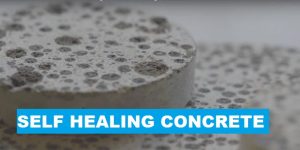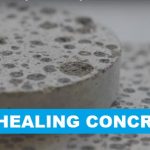Generally, Interlocking Concrete Paver (ICP), asphalt, and concrete imprint are used for road surfacing or pavement. However, the materials used to produce, manufacturing compliance standards, and process are different. Both ICP and asphalt are flexible pavement while imprint is rigid pavement. Thus, each has its own advantages and disadvantages for their application.
First off, ICP is a compressed concrete blocks manufactured at a factory, which can incorporate other materials such as glass cullet and glass beads for reflective, and also making them porous for water permeable. The finished surface can be either standard finishes or roughen finishes for a worn appearance.
ICP generally shall comply with either MS 1380:1995 or BS EN 1338:2003. Each of the standard specifications covers different requirements. MS 1380 covers the dimension tolerance and compressive strength, while MA 20 cover compressive strength and BS EN 1338 covers the dimension tolerance, water absorption, abrasion and skid/ slip resistance, and splitting tensile strength.
On the other hand, asphalt is made of aggregates bound together by bitumen and compacted upon laid at the site. The surface finish is rough as it takes the shapes of natural aggregates. In Malaysia, asphalt pavement for road works shall comply withnPWD Standard Specification for Road Works Section 4: Flexible Pavements (JKR/SPJ/2008-S4) and cored samples of the compacted asphalt are tested accordingly as mentioned.
Concrete imprint is also known as stamped concrete is a rigid pavement, as the entire layer is concrete, then colored, stamped, and/or sealed with sealant. The surface finishes may be either smooth or rough depending on the application. Each country will have its own specification and guidelines for the applicator to follow.
Let’s take Malaysia as an example again; In Malaysia concrete imprint for concrete pavement shall comply with PWD Standard Specification for Road Works – Section 5: Portland Cement Concrete Pavement (JKR/SPJ/1988) and samples are tested accordingly as mentioned in the specification. Table 1 shows a comparison between ICP, asphalt, and concrete imprint pavement.
Table 1: Comparison between pavements.
| ICP | Asphalt | Imprint | |
| Pavement type | Flexible | Flexible | Rigid |
| Material | Concrete | Bituminous aggregates | Concrete |
| Production method | Compressed at factory | Compressed at site | Batched and stamped |
| Incorporate with other materials (Eg. Glass beads) | Yes | No | No |
| Surface finishes | Standard or rough | Rough | Smooth or rough |
| Standard | MS 1380:1995/ MA 20/ BS EN 1338:2003 | JKR/SPJ/2008-S4 | JKR/SPJ/1988 |
| Length and width1,2 | ±2mm | – | – |
| Thickness1,2 | ±3mm | – | – |
| Compressive strength1,3 | Minimum 30MPa | – | – |
| Water absorption2 | Maximum 8% | – | – |
| Abrasion resistance2 | Maximum 23mm | – | – |
| Splitting tensile2 | Minimum 3.6MPa2 | – | – |
| Skid/slip resistance2 | Minimum 60 | – | – |
The Benefit of ICP over Concrete Imprint
The benefit of using ICP over the other pavement is that ICP is more durable in the long term as less patching works required for the pavement compared to asphalt and imprint. It also has better skid/slip resistance over both asphalt and imprint, as imprint generally are meant for the decorative purpose; hence, the surface has a smooth finish and has a higher tendency to cause slippage.
ICP can incorporate with other materials and colors to have a mixture of varieties such as monochrome effects, however asphalt pavement could not. Colors for ICP last longer compared to imprint because the colors blend together with the concrete during mixing, while imprint color is only on the surface layer. Over some time, imprint sealant wears off and the color starts to fade and wear off.
Replacing ICP is much easier work and hassle-free as taking out the broken ones and replaced with a new ICP, compared with asphalt and imprint where need to cut an area before patching work can be done. Imprint will take more time as concrete needs time to cure a few days before can be open for traffic, while ICP once replaced, the road can open for traffic immediately.
The Benefit of Using Asphalt over ICP
The benefit of using asphalt is that the installation time is faster than ICP, similar to imprint. While asphalt is water impenetrable due to bitumen, the same goes to imprint due to the sealant covering the imprint. This makes both asphalt and imprint inhibit the growth of weed.
Asphalt pavement is definitely cheaper in construction cost compared to ICP and imprint. However, high grade of asphalt pavement and imprint, which may last longer, the construction cost can be similar to ICP. Asphalt may be easier to patch compared to imprint, however, ICP only replaces the broken or damaged item.
The Conclusion
All three pavements have their own disadvantages as well, ICP may take longer to install compared to asphalt and imprint and certain ICP profiles are wear off faster at the turning points, lighter colors may be stained and the colors are usually more to pastel finish.
Asphalt, on the other hand, has lower skid/slip resistance, does not provide colored or pattern design, weak at turning points which leads to potholes, bitumen coating stained surrounding area during pre-laying of asphalt, hotter pavement surface, and ponds water.
As for imprint, it has weaker skid/ slip resistance due to sealant coating, color does not last due to sealant worn off, the concrete grade may be inconsistent during installation, old and new concrete does not bond with each other well, difficult to repair, and need to wait at least 7 days before allowed for traffic.
Nonetheless, all three pavement have their own advantages and disadvantages depends on their application, and as long as the road base is properly compacted. All three pavements will perform. However, for long term durability, ICP outperforms asphalt and imprint.
| Pros | |||
| ICP | Asphalt | Imprint | |
| Better skid/slip resistance | Fast installation | Fast installation | |
| Can incorporate other materials | Water impenetrable | Coloured surface | |
| Coloured surface | Cheap | Cheap | |
| Easily replaced | Easy to repair | Easier to clean | |
| Open to traffic immediately | Consistent according to grade | No weed growth | |
| Durable | No weed growth | – | |
| Cons | |||
| ICP | Asphalt | Imprint | |
| Slow installation | Weaker skid/slip resistance | Weaker skid/slip resistance | |
| Certain profiles are weak at the turning point | No colored pattern pavement | Difficult to repair | |
| Slightly expensive | Weak at the turning point | Colour does not last | |
| Lighter colour easily stained | New and old pavement do not match | Concrete grade inconsistent | |
| Limited colour option | Surrounding area stained by bitumen coating | Lighter color easily stained | |
| – | Hotter surface | Water ponding | |
| – | Water ponding | Need at least 7 days before open to traffic |










